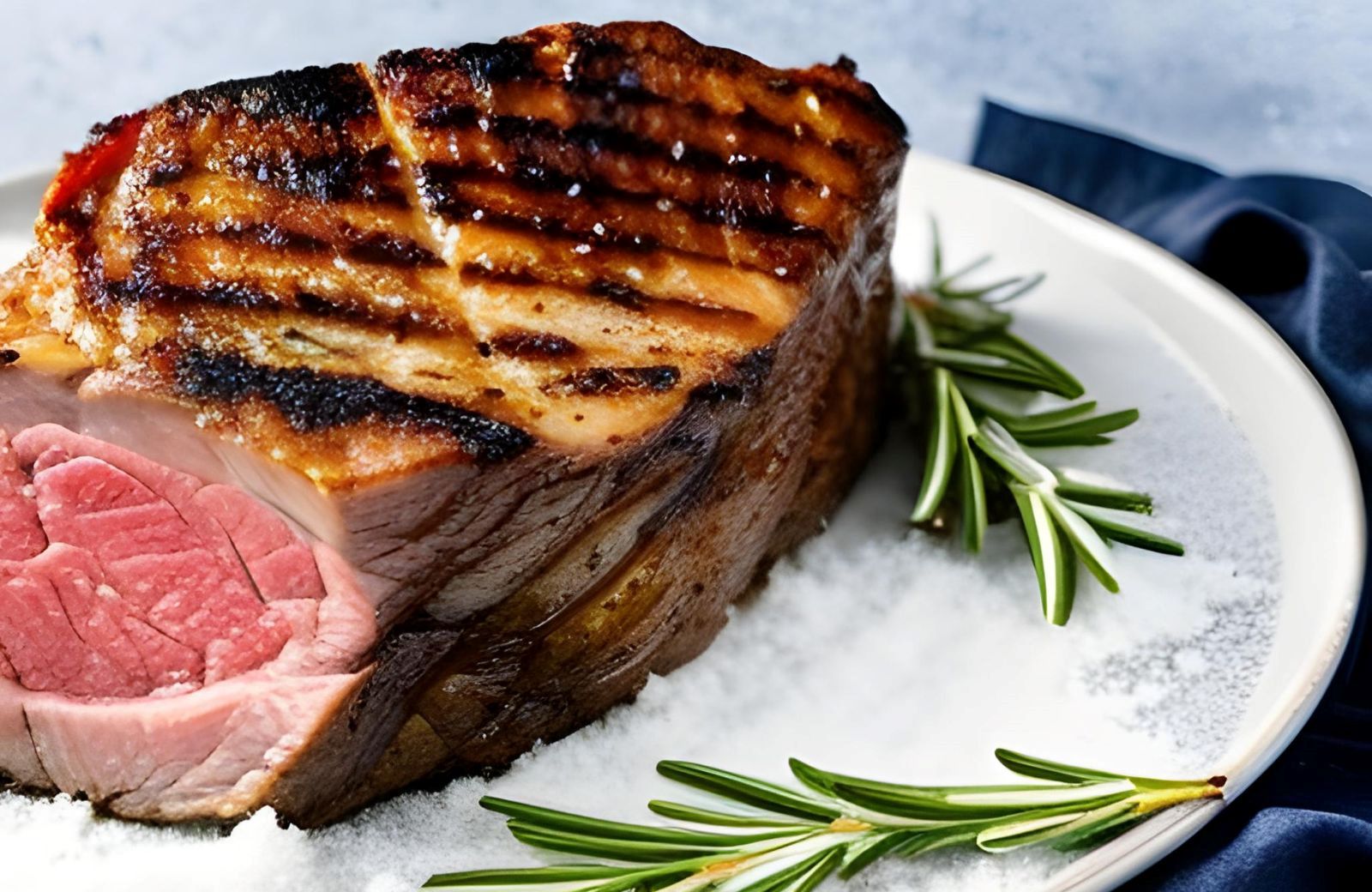
Ribeye roast is a flavorful and tender cut of beef that is highly sought after for its marbling and succulence. This premium roast is known for its rich taste and juicy texture, making it a popular choice for special occasions or indulgent meals. If you find yourself with leftover ribeye roast or want to save some for future enjoyment, freezing it is an excellent option. By freezing the ribeye roast, you can preserve its quality and flavor, ensuring that you have a delectable roast ready to be enjoyed whenever you desire. Whether you plan to use it for sandwiches, stir-fries, or simply as a main course, knowing the proper steps to freeze ribeye roast will help you maintain its taste and tenderness, making every bite a delightful experience.
Here are the steps to freeze a ribeye roast:
- Step 1: Choose a high-quality, fresh ribeye roast.
- Step 2: Trim any excess fat or connective tissue from the roast.
- Step 3: Wrap the ribeye roast tightly in plastic wrap.
- Step 4: Place the wrapped ribeye roast in a freezer-safe.
- Step 5: Label the container.
- Step 6: Place the container or bag in the freezer.
Step 1: Choose a high-quality, fresh ribeye roast.
Choosing a high-quality, fresh ribeye roast is important because it affects the taste, tenderness, and overall quality of the final product. Look for a ribeye roast that is bright red in color with some marbling (intramuscular fat) throughout the meat, which helps keep the meat moist and adds flavor. The beef should be fresh and have no unpleasant odor. It’s also essential to buy from a reputable supplier to ensure the meat is properly handled and stored to avoid contamination
Step 2: Trim any excess fat or connective tissue from the roast.
Trimming any excess fat or connective tissue from the ribeye roast is essential for several reasons. Firstly, excess fat can cause flare-ups during cooking, leading to uneven cooking and charring. Secondly, too much fat can make the meat greasy and unappetizing. Thirdly, removing connective tissue helps to tenderize the meat and make it more enjoyable to eat. Finally, trimming excess fat and connective tissue allows the seasonings and rubs to penetrate the meat, enhancing the flavor.
Step 3: Wrap the ribeye roast tightly in plastic wrap.
Wrapping the ribeye roast tightly in plastic wrap is important because it helps to prevent freezer burn, which can cause the meat to become dry, tough, and lose its flavor. Air pockets can lead to freezer burn, so it’s essential to ensure that the plastic wrap is tight and snug against the meat. Make sure to cover the entire surface of the ribeye roast with the plastic wrap, and press out any air pockets before sealing the wrap. This will help to create a protective barrier that keeps moisture in and air out, preserving the quality and freshness of the meat.
Step 4: Place the wrapped ribeye roast in a freezer-safe.
Placing the wrapped ribeye roast in a freezer-safe, airtight container or a heavy-duty freezer bag is important to protect the meat from freezer burn and other contaminants. Freezer-safe containers or bags are designed to withstand the cold temperature of the freezer and prevent air from getting in, which can cause freezer burn.
Airtight containers or bags also prevent any odors from other foods in the freezer from penetrating the meat. It’s important to choose a container or bag that is appropriately sized for the ribeye roast, as excess air in the container can also lead to freezer burn. Additionally, labeling the container or bag with the date and contents is important for keeping track of how long the meat has been frozen.
Step 5: Label the container.
Labeling the container or bag with the date and contents is important for several reasons. Firstly, it helps you keep track of how long the ribeye roast has been frozen, so you can ensure that it’s still safe to consume. Secondly, it helps you quickly identify the contents of the container or bag, so you don’t have to open it to see what’s inside. This can save time and reduce the risk of contamination. Finally, labeling is important for the organization, especially if you have multiple containers or bags of frozen meat in the freezer. You can easily find what you’re looking for without having to dig through everything. It’s recommended to use a waterproof marker or label to prevent it from smudging or fading.
Step 6: Place the container or bag in the freezer.
Placing the container or bag with the wrapped ribeye roast in the freezer is the final step to freezing the meat. It’s essential to place the container or bag in the coldest part of the freezer, which is usually the back or bottom. This will ensure that the ribeye roast freezes quickly and remains frozen, which helps to preserve the quality and freshness of the meat. It’s also important to avoid stacking items on top of the container or bag, as this can damage the meat and cause it to lose its shape. Once the ribeye roast is frozen, it can be stored in the freezer for up to 6-12 months.
What are the best-recommended bags and containers for freezing ribeye toast?
- Vacuum-sealed bags: These bags are designed to remove all air from the bag, which helps to prevent freezer burn and preserve the freshness of the meat. They are available in different sizes and can be easily labeled.
- Heavy-duty freezer bags: These bags are thicker and more durable than regular storage bags, which makes them less likely to tear or puncture in the freezer. They are also available in different sizes and can be easily labeled.
- Freezer-safe containers: These containers are designed to withstand the cold temperature of the freezer and are airtight, which helps to prevent freezer burn and odors from other foods. They come in different sizes and shapes, and some are even stackable, which helps to save space in the freezer.
When using bags or containers, it’s important to make sure they are appropriately sized for the ribeye roast, so there is minimal excess air, which can cause freezer burn. Additionally, labeling the bags or containers with the date and contents is important for organization and keeping track of how long the meat has been frozen.
Other related questions
How long does ribeye roast last in the freezer?
A ribeye roast can last in the freezer for up to 12 months if stored properly in an airtight container or freezer bag to prevent freezer burn. It’s important to label the package with the date of freezing to keep track of its age. Thaw the roast in the refrigerator before cooking, allowing 24 hours of thawing time for every 5 pounds of meat. Once thawed, cook the ribeye roast within three to five days for the best quality.
How can I tell if frozen ribeye toast has gone bad?
When frozen ribeye roast has gone bad, it may have signs of freezer burn, such as discolored patches, dryness, or toughness. The meat may also have a sour or off smell, or feel slimy or tacky to the touch. Additionally, if the meat has been stored for too long, it may develop a rancid taste or smell. If you’re in doubt about the safety of the frozen ribeye roast, it’s best to discard it to avoid the risk of foodborne illness.
Can I microwave frozen ribeye toast?
While it’s possible to microwave frozen ribeye roast to defrost it quickly, it’s not recommended to cook the meat in the microwave as it can result in uneven cooking and make the meat tough. The microwave can also cause the outer layers of the meat to become overcooked while the interior remains frozen, leading to dryness and loss of flavor. It’s best to thaw the ribeye roast in the refrigerator or under cold running water and then cook it using your preferred method to ensure even cooking and optimal taste and texture.
Can you thaw frozen ribeye toast in the fridge?
Yes, it’s recommended to thaw frozen ribeye roast in the refrigerator as it’s the safest and most effective method for defrosting meat. Simply transfer the frozen ribeye roast from the freezer to a plate or tray in the fridge and let it thaw slowly for 24-48 hours, depending on its size. Thawing in the fridge allows the meat to defrost evenly and helps to prevent the growth of harmful bacteria. Once thawed, the ribeye roast can be cooked using your preferred method to achieve the desired level of doneness.
Is it better to freeze or ribeye roast?
It’s perfectly fine to freeze ribeye roast if you won’t be using it immediately, as long as it’s done properly. Freezing can help to extend the shelf life of the meat and preserve its flavor and texture. However, for the best quality, it’s recommended to cook a fresh ribeye roast within a few days of purchasing it. Fresh meat tends to have a better flavor and texture than frozen meat, and you have more control over the level of doneness. So if you have the option, it’s generally better to cook fresh ribeye roast rather than freezing it.
Does freezing ribeye roast dry them out?
When done properly, freezing ribeye roast should not dry them out. However, improper packaging or prolonged storage in the freezer can result in freezer burn, which can cause the meat to become dry, discolored, and tough. To prevent freezer burn, it’s important to wrap the ribeye roast tightly in plastic wrap, place it in an airtight container or freezer bag, and label it with the date and contents. It’s also recommended to use the frozen ribeye roast within 6-12 months for the best quality. Thawing the meat properly before cooking can help to ensure optimal flavor and texture.
Can you refreeze the ribeye roast?
It’s generally not recommended to refreeze ribeye roast once it has been thawed because freezing and thawing can affect the texture and quality of the meat, and refreezing can increase the risk of bacterial growth. It’s best to use the thawed ribeye roast within a few days or cook it before refreezing.








